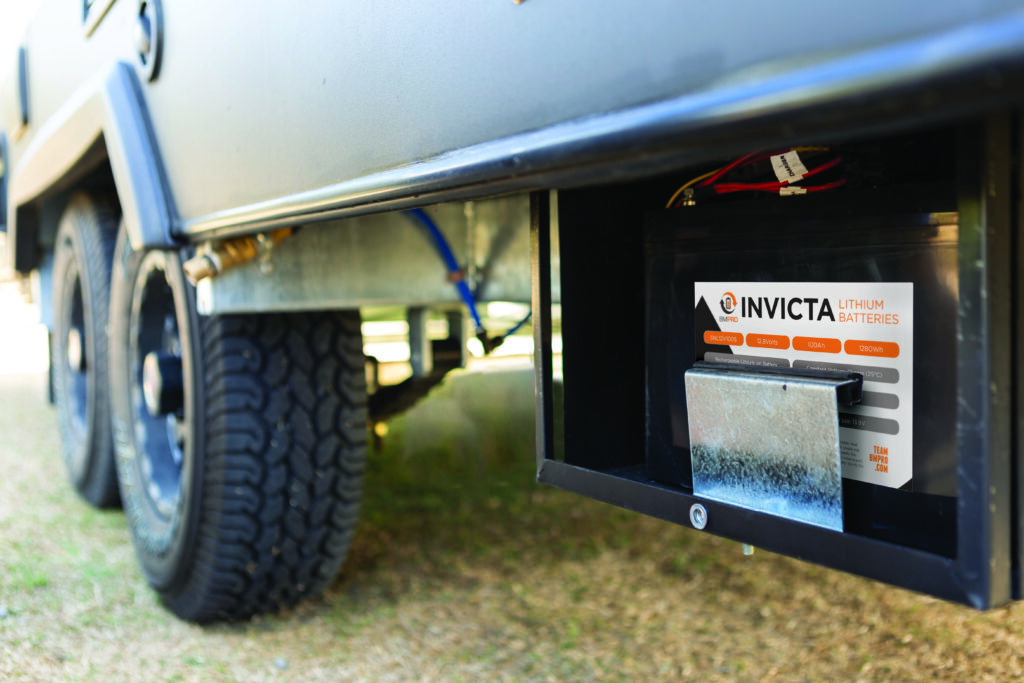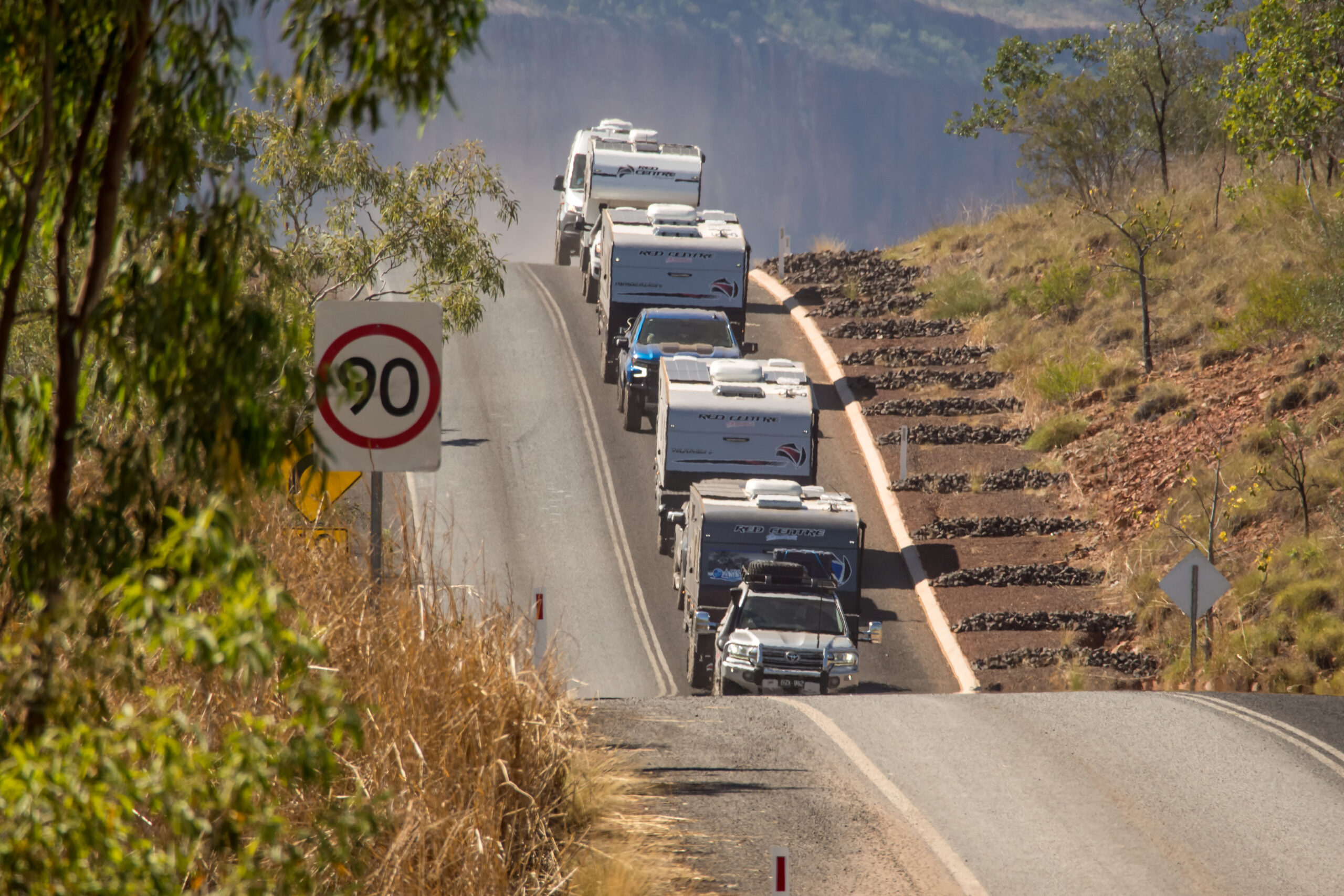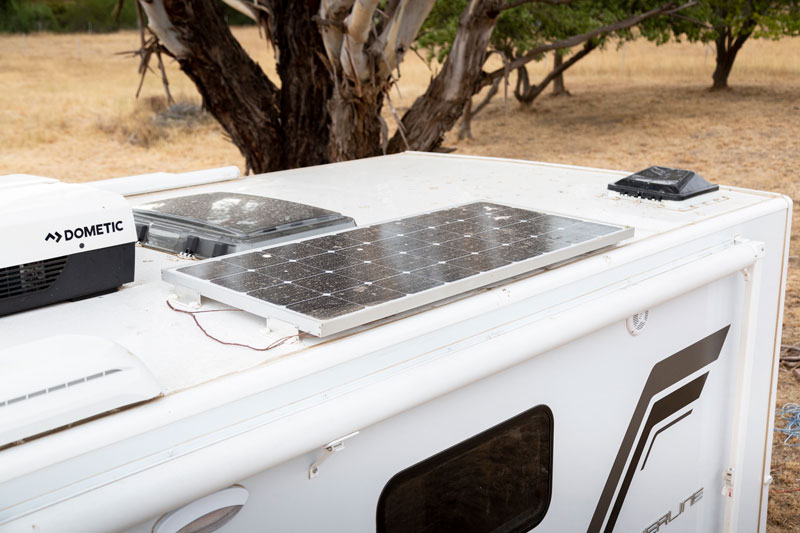
LITHIUM BATTERY GUIDELINES TO AS/NZ3001.2:2022
This is a guide to help understand the requirements of the new standard in relation to lithium battery
Hi Guru,
Have just heard there are new standards around storing house batteries in caravans – will this be retrospective and enforceable?
Pete Weatherley – St Albans, VIC
As we all know the storage of batteries within our caravans and campers has been a “hot” topic for many years with various interpretations and opinions as to the best possible storage methods. Well now there is a new sheriff in town, in the form of Australian Standards AS/NZS3001.2:2022 – released in mid-November last year after much consultation with electrical experts and industry.
The standards are embedded within Australian Design Rule ADR 42/05 (section 21.7) which specifically calls out AS 3001 standard. Since it is captured in an ADR, all manufacturers and importers must comply. While any new standard or requirement creates an initial impost on a business in the way of time, cost and/or labour it does create a platform whereby manufacturers, consumers and the industry as a whole can have confidence in more standardised products with new levels of safety and consistency.
The standards cover a wide range of topics but one in particular that is of focus to us in Power Management Systems is the storage of batteries. The majority of caravans, motorhomes and campers that hit the road are installed with lead acid batteries and having seen a few systems over time we can certainly call some methods of storing the batteries questionable. In this month’s article we address Pete’s question and cover why the standards are necessary.
Whilst I am not a fan of over-regulation, I feel we have in this column been consistent in explaining good practice in electrical systems and sometimes a bit of regulation cleans up substandard systems which tarnishes the majority of well-thought-through installations. It’s nothing that should be done already.
The types of lead acid batteries generally used by manufacturers are SLA – meaning “Sealed Lead Acid”. Also known as VRLA – Valve Regulated Lead Acid. Both will however have a one-way high-pressure valve somewhere towards the top of the battery to release excessive build of gases which are created internally during the charging process. It is normal for gas to be produced during the charging process however these are normally absorbed back into the internal chemistry of the battery. When a battery or charger is faulty, it can cause excessive overcharging, resulting in the production of an excess amount of gas that cannot be reabsorbed. This gas, which is a mixture of hydrogen, oxygen and sulphur, can be flammable and toxic when present in the right concentration. To prevent the battery from expanding and potentially opening, which could result in unsafe spillage of sulfuric acid, a one-way valve is designed to safely release this gas.
Although it would require specific conditions for Hydrogen and Oxygen to create a flammable or explosive situation upon release, it is more probable to detect the unpleasant odour of “rotten eggs” from gases like Hydrogen Sulphide, which can cause severe health issues like apnea, coma, convulsions, dizziness, headache, weakness, irritability, insomnia, and stomach upset when exposed to for prolonged periods or at high concentrations, and may go unnoticed by the human nose.
The new standards have identified two main reasons for concern, and as a result, they now include explicit measures to address the accumulation of gases resulting from excessive gas release in SLA’s.
As per recent data released by Caravan Industry Australia, imported recreational vehicles (RVs) have shown a significant increase, challenging the market share of locally manufactured RVs. This underscores the importance of maintaining consistent standards across the industry. Although the new standard has already been implemented, it will only be enforceable on new RVs starting from mid-November 2023. While there won’t be any 12V police patrolling caravan parks to enforce strict compliance, there is a clear expectation on Australian manufacturers and importers to adhere to the new Australian Standards. It is also anticipated that the industry as a whole will hold itself accountable for identifying and addressing non-compliance issues.
Like this post? Share it!

This is a guide to help understand the requirements of the new standard in relation to lithium battery

Looking for more Power? Our 12V Guru discusses the key elements you need to know when upgrading a 12V system

Solar Panels installed on your vehicle roof? Our 12V Guru discusses how to optimise their performance in place of buying more panels

© 2020